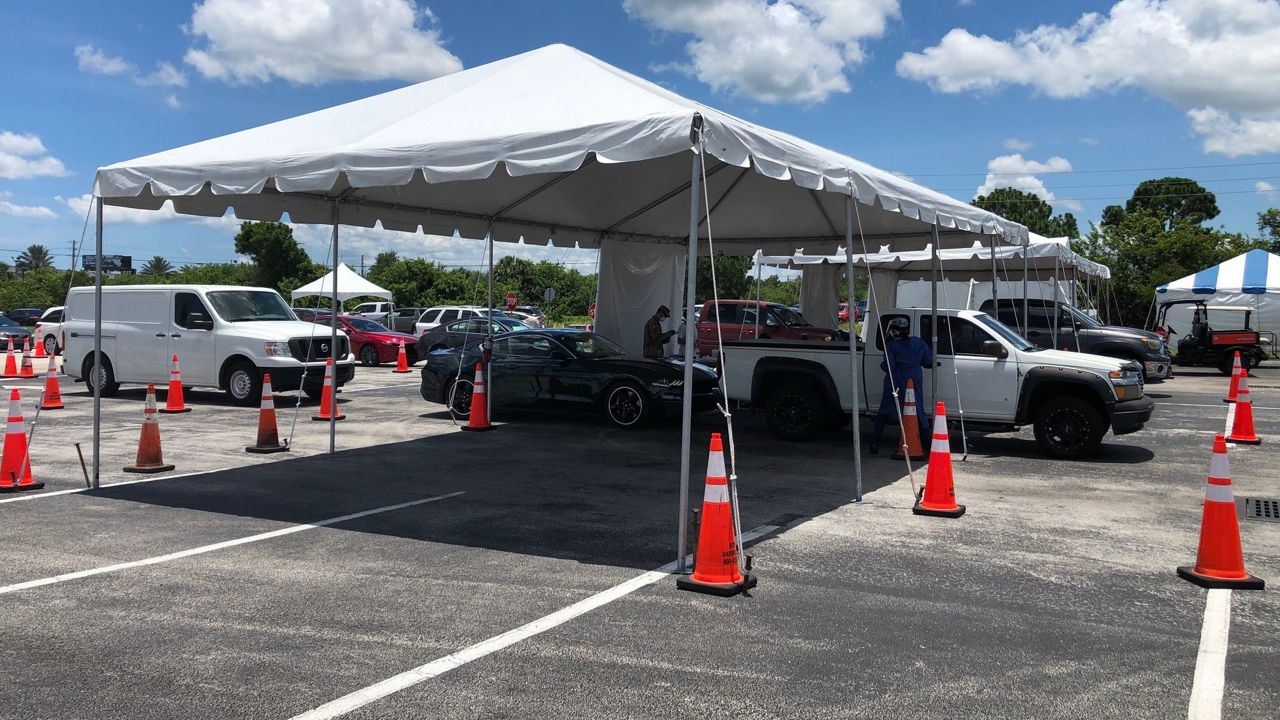STATEWIDE — The state on Thursday reported another 5,004 new coronavirus cases, the second day in a row that the state's new reported cases eclipsed 5,000.
What You Need To Know
- CORONAVIRUS LIVE UPDATES: In the Central Florida area | In the Tampa Bay area
- COVID-19 IMPACTS ON: Airports, Transportation Systems | Sports Events and Teams | Attractions | School Districts and Universities | Retailers, Restaurants Adjust Hours
- FREE CHARTER WIFI: Charter Communications to Offer Free Broadband, WiFi Access to Families with Elementary, College Students
- COMPLETE COVERAGE: Spectrum News | CDC | Florida Department of Health
On Wednesday, Florida reported the highest number of new cases yet during the pandemic: 5,511. That record broke the one set on Saturday with 4,049 cases.
The Florida’s Department of Health on Thursday also reported 46 new deaths and 201 hospitalizations.
"We are where we are,'' said Gov. Ron DeSantis during a news conference at a Tampa high school. He added that many of the new cases are in younger, healthier people. People can avoid spreading the virus by wearing masks, he said, along with avoiding big crowds and not being within close quarters with lots of other people indoors.
"Outdoors in Florida is better than the air conditioning, in terms of the virus," he said.
Orange County broke its own record with the highest number of cases in a single day at 730, according to the department. And Polk County saw a decrease of 117 new cases for Thursday. On Wednesday, it had 175. Meanwhile, Seminole County also saw a decrease with 144 cases compared to the 173 cases from the day before.
Florida is just one of several states considered to be a COVID-19 hot zone, which prompted New Jersey, New York and Connecticut to impose a two-week quarantine for travelers coming from places battling "significant community spread," which includes Florida, Alabama, Arkansas, North Carolina, Arizona, South Carolina, Washington, Utah, and Texas. The new rule went into effect at midnight on Thursday.
In March, DeSantis issued the same kind of restrictions for people coming from New Jersey, Connecticut, or New York to Florida, when cases in the Northeast were surging. That travel restriction is actually still in effect.
For the week beginning June 14 — the last latest full week available — the positivity rate was at nearly 8.5 percent.
Basically to get that number, one has to take the tests given and divide it by the number of people testing positive.
On Wednesday, Florida recorded the highest single day number of cases since testing began that spiked the single day positivity rate to nearly 16 percent.
Experts at the World Health Organization say positivity rates need to be 10 percent or lower. Florida has been above that number for several days now.
Epidemiologists say anything higher than 10 percent suggests an ongoing epidemic in a community with the virus quickly spreading to other people.
So when did Florida have a really low weekly average rate? You have to go back more than a month ago to the week of May 17 when it was around 2.25 percent.
Since testing began when this pandemic started, the state's tested more than 1.6 million people since then with a little more than 109,000 testing positive.
That overall positivity rate is 6.5 percent, but the last few weeks with numbers soaring, that number will rise too.
AdventHealth announced Thursday hospitalizations are at an all-time high, but they are prepared to handle the increase.
"We've got enough PPE, personal protective equipment. We have the staff. We have the hindsight in having taken care of COVID patients," said Dr. Vincent Hsu, AdventHealth's infection control officer. "So we know what to expect, but of course we want to do what we can in the community to keep these cases as low as possible."
AdventHealth added the death rate is not rising rapidly with cases. Their doctors emphasized wearing masks, practicing social distancing, and hand washing are essential in stopping the spread.
Sign up now for one of our newsletters that will show up in your inbox every weekday at 1 p.m. The newsletters highlight the most important stories of the day that you need to know for your area.



